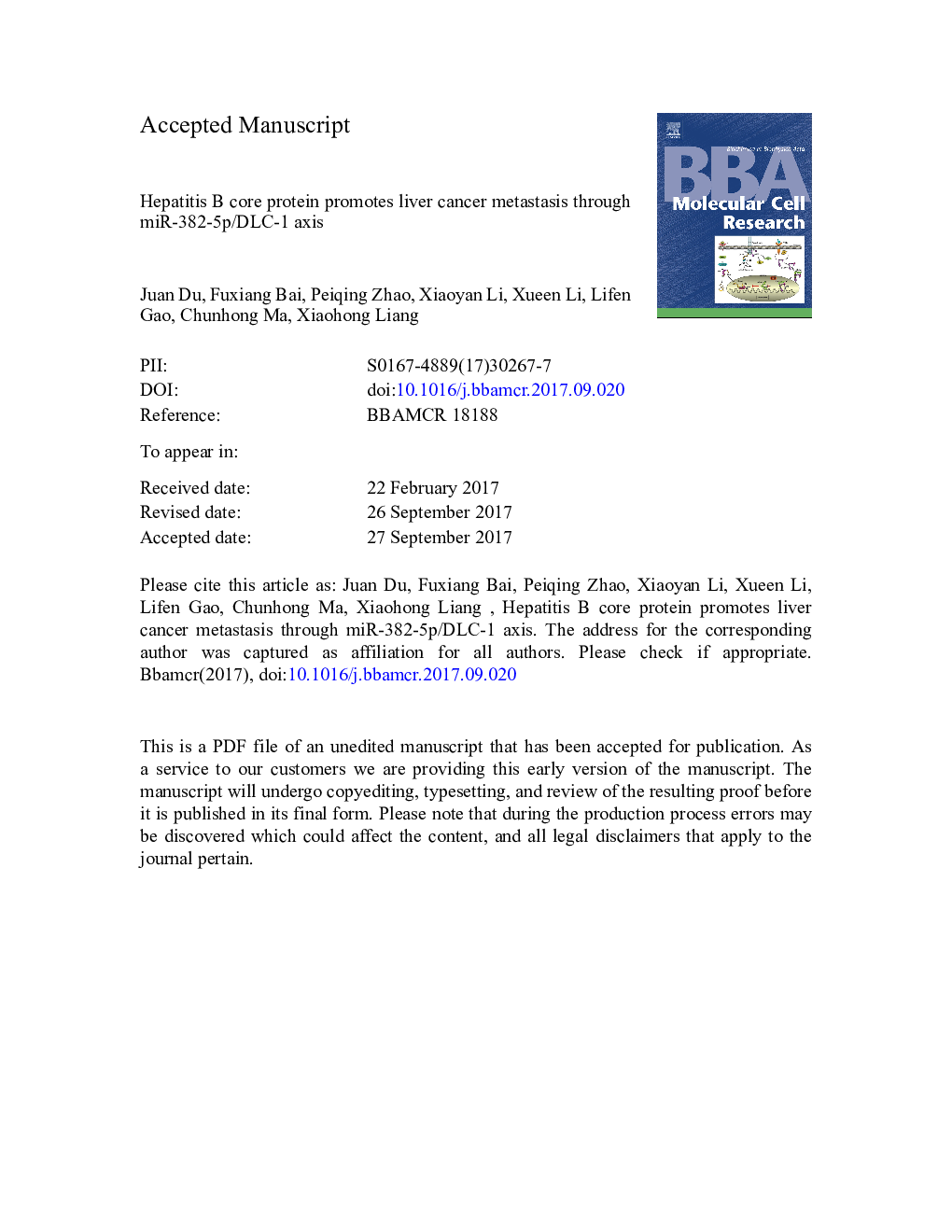| Article ID | Journal | Published Year | Pages | File Type |
|---|---|---|---|---|
| 8303748 | Biochimica et Biophysica Acta (BBA) - Molecular Cell Research | 2018 | 43 Pages |
Abstract
The hepatitis B virus core protein (HBc), also named core antigen, is well-known for its key role in viral capsid formation and virus replication. Recently, studies showed that HBc has the potential to control cell biology activity by regulating host gene expression. Here, we utilized miRNA microarray to identify 24 upregulated miRNAs and 21 downregulated miRNAs in HBc-expressed HCC cells, which were involved in multiple biological processes, including cell motility. Consistently, the in vitro transwell assay and the in vivo tail-vein injection model showed HBc promotion on HCC metastasis. Further, the miRNA-target gene network analysis displayed that the deleted in liver cancer (DLC-1) gene, an important negative regulator for cell motility, was potentially targeted by several differentially expressed miRNAs in HBc-introduced cells. Introduction of miRNAs mimics or inhibitors and 3â²UTR luciferase activity assay proved that miR-382-5p efficiently suppressed DLC-1 expression and its 3â²-UTR luciferase reporter activity. Importantly, cotransfection of miR-382-5p mimics/inhibitors and the DLC-1 expression vector almost abrogated HBc promotion on cell motility, indicating that the miR-382-5p/DLC-1 axis is important for mediating HBc-enhanced HCC motility. Clinical HCC samples also showed a negative correlation between miR-382-5p and DLC-1 expression level. Furthermore, HBc-positive HCC tissues showed high miR-382-5p level and reduced DLC-1 expression. In conclusion, our findings revealed that HBc promoted HCC motility by regulating the miR-382-5p/DLC-1 axis, which might provide a novel target for clinical diagnosis and treatment.
Related Topics
Life Sciences
Biochemistry, Genetics and Molecular Biology
Biochemistry
Authors
Juan Du, Fuxiang Bai, Peiqing Zhao, Xiaoyan Li, Xueen Li, Lifen Gao, Chunhong Ma, Xiaohong Liang,
